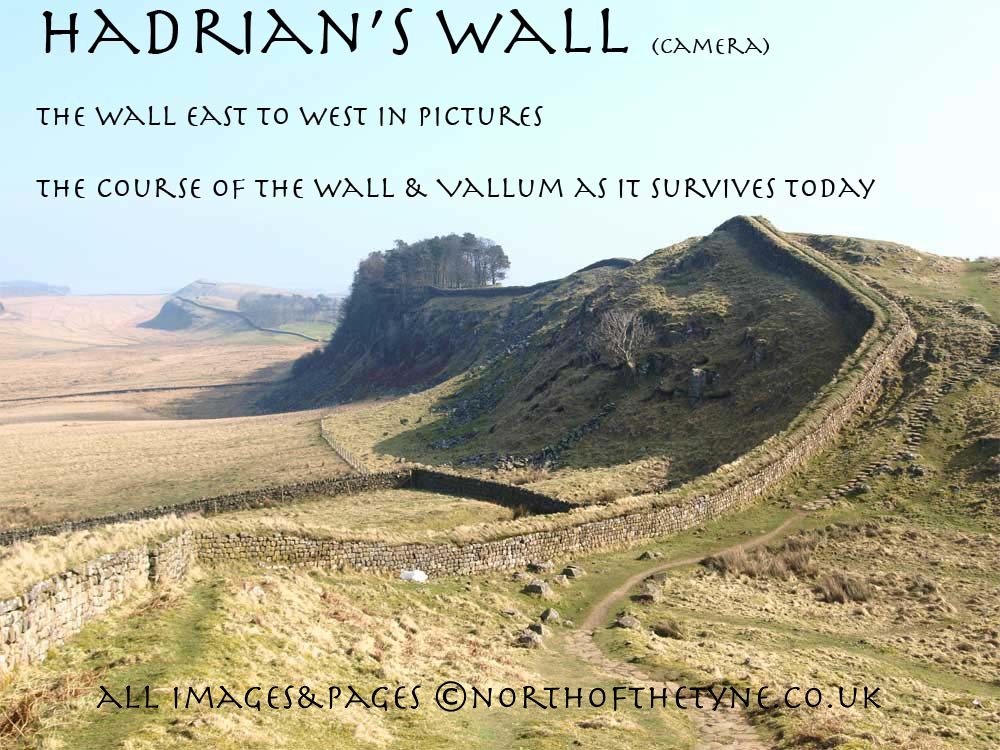 |
 |
 |
|||||||||||||||||||||||||||||||||||||||||||||||||||||||||||||||||||||
 |
|||||||||||||||||||||||||||||||||||||||||||||||||||||||||||||||||||||||
|
|
||||||||||||||||||||||||||||||||||||||||||||||||||||||||||||||||||||||
|
In the map above click to visit the Forts (The yellow markers indicate Forts not yet visited for this site) . To go to selected length of the Wall click the milecastle numbers in the right hand table
|
|||||||||||||||||||||||||||||||||||||||||||||||||||||||||||||||||||||||
|
There are countless books, histories and many websites relating to the Wall built by the Romans between Wallsend on the River Tyne and Bowness on the Solway in the second century AD. My intention is to photograph the line of the Wall and of the Vallum and Defensive Ditch as they can be found today with photographs throughout its length.
Starting at SEGEDUNUM and travelling west through the streets of Wallsend, Walker, Newcastle upon Tyne and Carlisle to the Fort MAIA at Bowness on Solway in Cumbria.there will be a page for each stretch. Should it be practical the forts, and not all of them are on the Wall, I will cover separately. Work Commencing 11/11/2008 MC 53t o MC58 completed. This is a work in progress September 2014 NBM Roman Mile = 1620 yards = 0.92Mile = 1.48km The information offered on this site owes a considerable debt to that gleaned from "The Roman Wall - Comprehensive History and Guide" by Frank Graham and published by him in 1979 and by other works shown as references on each page |
|||||||||||||||||||||||||||||||||||||||||||||||||||||||||||||||||||||||
 |
|||||||||||||||||||||||||||||||||||||||||||||||||||||||||||||||||||||||
 |
|||||||||||||||||||||||||||||||||||||||||||||||||||||||||||||||||||||||
|
Some information about Hadrian's Wall
Hadrian's Wall a World Heritage Site with a length of 80 Roman Miles (73.5 Standard miles) ran from SEGEDUNUM (Wallsend on Tyne) to MIAI (Bowness on Solway). The Vallum lies to the south of the Wall and was the line deliniating the extent of the Roman Empire The purpose of the wall was to defend the line.*1 The relative complexity of the Vallum confused early scholars who considered it to be a defensive ditch.*2 The Fighting Ditch was employed throughout the length of the wall except where terrain made it unnecessary or impractical. The "Second Plan" was implimented on Hadrian's instructions, this being to add the Forts to the Wall and to put the Military Way in place to offer a line of communication and supply between the Forts The Stone Wall in the "First Plan" was to be 10 ft wide and 15ft 6inches high at the parapet but quite soon after it was decided to amend the width to 8ft and in some places 6ft, this most notably to be seen at Brunton turret 26b. Page VI This stone wall was constructed for 23 miles but not continued beyond the River Irthing (beyond Gilsland) and in its place a Turf wall was substituted the Forts and turrets being constructed of wood. Some of these were replaced with stone a few years later. *1 Richard Devine The Northwest Frontier of the Roman Empire. Chap 9 Pg. 147 *2 Horsley |
|||||||||||||||||||||||||||||||||||||||||||||||||||||||||||||||||||||||
 |
|||||||||||||||||||||||||||||||||||||||||||||||||||||||||||||||||||||||
|
|
|||||||||||||||||||||||||||||||||||||||||||||||||||||||||||||||||||||||
 |
 |
||||||||||||||||||||||||||||||||||||||||||||||||||||||||||||||||||||||
 |
|||||||||||||||||||||||||||||||||||||||||||||||||||||||||||||||||||||||
 |
|||||||||||||||||||||||||||||||||||||||||||||||||||||||||||||||||||||||